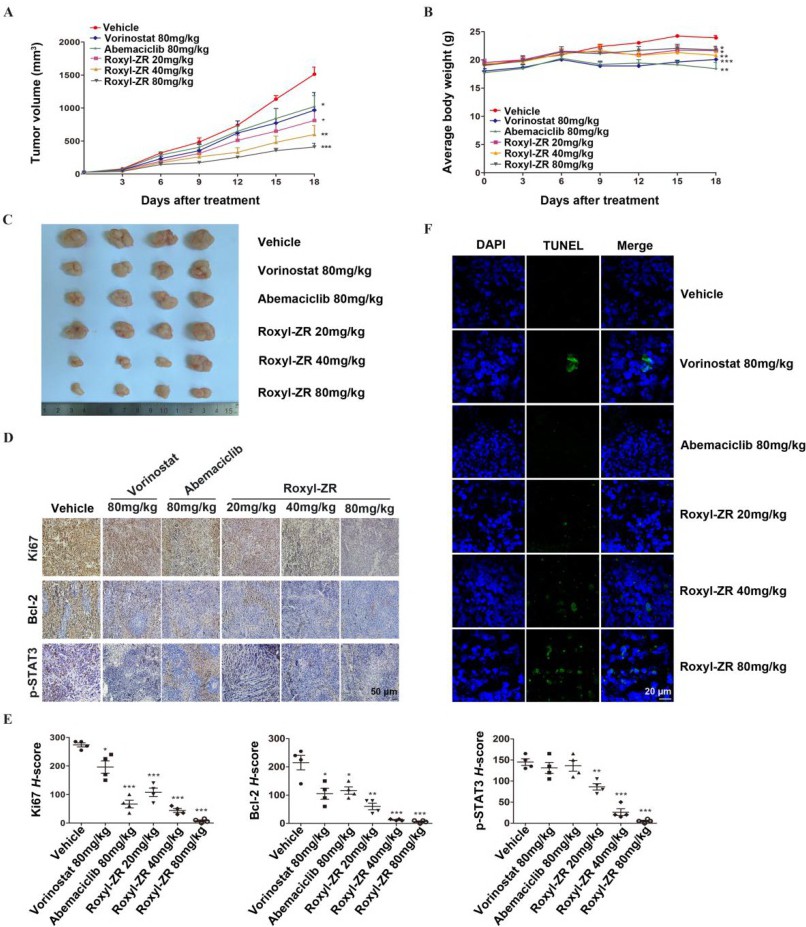Fig. 5. Roxyl-ZR restrains UM1 subcutaneous xenograft tumor growth. (A) Growth curves of Roxyl-ZR (20 mg/kg, 40 mg/kg, 80 mg/kg)-, vorinostat (80 mg/kg)-, abemaciclib (80 mg/kg)-, or vehicle-treated subcutaneous xenograft tumors. The growth rate in the Roxyl-ZR groups was inhibited compared with the other groups at day 18. (B) Average body weights of xenograft tumor mice after treatment with Roxyl-ZR, vorinostat, abemaciclib, or vehicle. (C) Photograph of excised tumors with respective mice at day 18. Treatment with Roxyl-ZR resulted in a decrease in tumor volume compared with other groups. (D and E) Levels of Ki67, Bcl-2, and p-STAT3 expression were down-regulated in Roxyl-ZR groups in a dose-dependent manner compared with the other groups, as determined by IHC staining. (F) TUNEL assay indicated dose-dependent apoptotic nuclei (green) in Roxyl-ZR groups.
